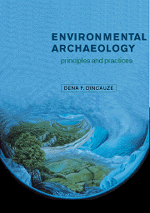Book contents
- Frontmatter
- Contents
- List of figures
- List of tables
- Preface
- Acknowledgments
- Glossary
- PART I INTRODUCTION
- PART II CHRONOLOGY
- PART III CLIMATE
- PART IV GEOMORPHOLOGY
- PART V SEDIMENTS AND SOILS
- PART VI VEGETATION
- 13 CONCEPTS AND METHODS IN PALEOBOTANY
- 14 VEGETATION IN PALEOECOLOGY
- Case Study: The paleoecology of the elm decline
- PART VII FAUNA
- PART VIII INTEGRATION
- References
- Index
13 - CONCEPTS AND METHODS IN PALEOBOTANY
Published online by Cambridge University Press: 20 January 2010
- Frontmatter
- Contents
- List of figures
- List of tables
- Preface
- Acknowledgments
- Glossary
- PART I INTRODUCTION
- PART II CHRONOLOGY
- PART III CLIMATE
- PART IV GEOMORPHOLOGY
- PART V SEDIMENTS AND SOILS
- PART VI VEGETATION
- 13 CONCEPTS AND METHODS IN PALEOBOTANY
- 14 VEGETATION IN PALEOECOLOGY
- Case Study: The paleoecology of the elm decline
- PART VII FAUNA
- PART VIII INTEGRATION
- References
- Index
Summary
At times, evidence from different sources may on the face of it appear to be contradictory. Ultimately, of course, there can be no contradiction.
DIMBLEBY 1985: xiNot long ago the biosphere encompassed by definition two taxonomic kingdoms: Animals and Plants. Fungi and algae were included in the plant kingdom, and bacteria were somewhere between. The currently dominant taxonomy (systematic classifi- cation), based in large measure on organic form, recognizes five kingdoms, with bacteria and some algae included in Monera, other algae and simple “eukaryotic” organisms (having discrete nuclei in their cells) in Protista, and Fungi in a kingdom of their own (Margulis and Schwartz 1982). The kingdom of Plantae includes most of what we recognize as plants (vegetation) – trees, shrubs, flowers, mosses, ferns, and so forth. Recent research in microbiology has forced reconsideration of the organization and history of life, and initiated a period of classificatory revisions. An emerging taxonomy based on molecular criteria proposes three “domains” at the foundation of life: Archaea (microbes unlike bacteria), Bacteria (with blue-green algae), and Eukarya (all organismswith distinct cell nuclei). Members of the newly recognized group, Archaea, are separate from but differentially related to the two other groups, and with bacteria comprise the prokaryotes (organisms lacking cell nuclei). The domain of Eukarya includes plants, animals, fungi, and protists (single-celled organisms with cellular nuclei). As the new criteria are tested against extant classifications, the results are likely to rearrange classes even further and modify phylogenetic trees (Pace 1997). Archaeologists can wait for these developments but should be aware of the new uncertainties and alert to the need for clear analytical language.
Information
- Type
- Chapter
- Information
- Environmental ArchaeologyPrinciples and Practice, pp. 329 - 368Publisher: Cambridge University PressPrint publication year: 2000
